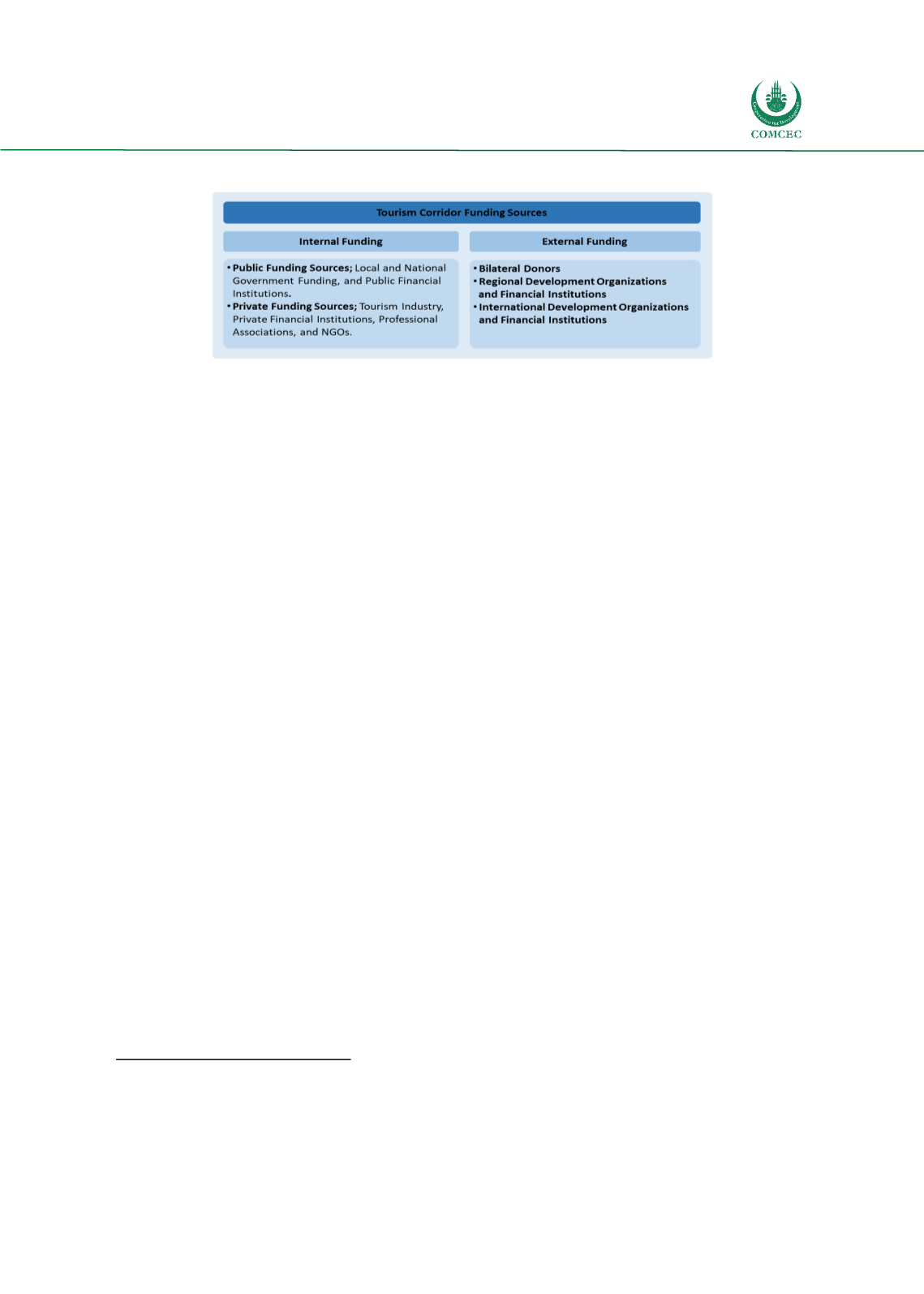

Sustainable Destination Management
Strategies in the OIC Member Countries
73
Figure 25: Tourism Corridor Funding Sources
Some of the OIC MDTCs seem to be reliant on external funding from to a large extent, while
others such as the Holy Family depend solely on internal funding, more specifically,
government funding.
242
In the case of t
he
Abraham Path, the development of the corridor in
Palestine has been utterly reliant on external funding. It has received funding of up to $2.3
million from the World Bank over a period of 4 years. It has also received an additional $1.7
million in funding from the French agency for international development as well as from
various French NGOs.
243
In the case of the Umayyad Route, funding comes from external sources is also quite substantial.
The external funding provided by the European Neighborhood and Partnership Instrument
(ENPI) amounted to 90% of the budget (3.7 million of 4.2 million) from 2012 to 2015, with
public funding supplying the remaining 10%.
244
In Jordan, additional external funding options
are being explored, including grants fromUSAID, UNDP, and the World Monument Fund as well
as loans from the World Bank and the European Investment bank.
245
Funding for the Silk Road TC combines external and internal sources. The UNWTO Silk Road
Programme Office has faced budgetary constraints by seeking funding through EU instruments
such as the VeroTour as well as private sector contributions such as in the case of the Maritime
Silk Road, which was sponsored a Chinese company. Sponsorships by hosting countries and
airline carriers is sought for hosting events, such as the Annual Silk Road Task Force meetings.
Countries along the Silk Road TC use public funding to cover the activities launched to promote
the corridor sites in their countries, as in the case of
t
he State Committee of the Republic of
Uzbekistan for Tourism Development (GosCom Tourism) in Uzbekistan.
246
Examples from the OIC MDTCs show the use of a few sources of funding with heavy reliance, in
some instances, on external funding. While the Silk Road seems to have a more diversified
funding strategy, its funding levels are still reportedly low. While funding provided by external
sources can provide support to MDTCs, diversifying funding is essential to help ensure the
sustainability of the existing OIC MDTCs. The OIC MDTCs can work on exploring funding
streams such as encouraging contributions from the private sector along corridor nodes, as in
the case of the Silk Road TC.
242
Please refer to the Holy Family case study for further details.
243
Teller, Matthew. 2018. Hike Palestine. Aramco World Website.
244
ENPI CBCMED Website.
245
CulTech. 2015. Strategic Local Action Plan for Jordan UMAYYAD Project: A strategic ENPI-CBCMED Project.
246
Please refer to the Silk Road case study for further details.
















